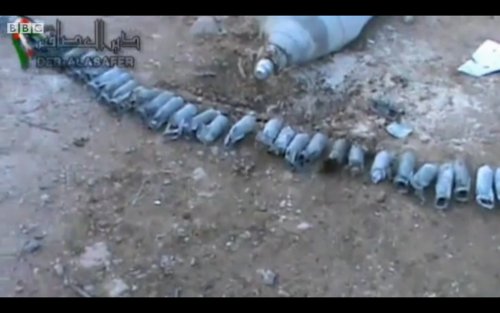Syria Snap Analysis: Latest on the "Chemical Weapon" Attacks
Two competing stories have featured in the last 48 hours over Tuesday's "chemical attacks" near Aleppo and Damascus. The first is a statement posted yesterday from the Syrian opposition in which they claim that Echothiophate, a chemical often found in insecticides, was used in both incidents, having been delivered by a Scud missile.
The second narrative, from US officials, is that there was no chemical weapons attack.
Echothiophate is an organophosphate. According to a physician contacted by EA, its effects match some of the symptoms reported from a doctor in Damascus, including bradycardia, vasodilation, nausea and vomiting, and bronchoconstriction. It is a slower-acting compound than some other nerve agents, like Sarin. It is unclear if there are additional symptoms, like involuntary muscle movements, that have been seen in these videos.
Some have suggested that the chemical smells like "rotten cabbage." That is important because people in the Damascus atttack reported a strong odour, albeit one like chlorine.
Here's the video, with English subtitles, where the doctor in Damascus reports that an organophosphate has been used:

 Friday, March 22, 2013 at 13:27
Friday, March 22, 2013 at 13:27